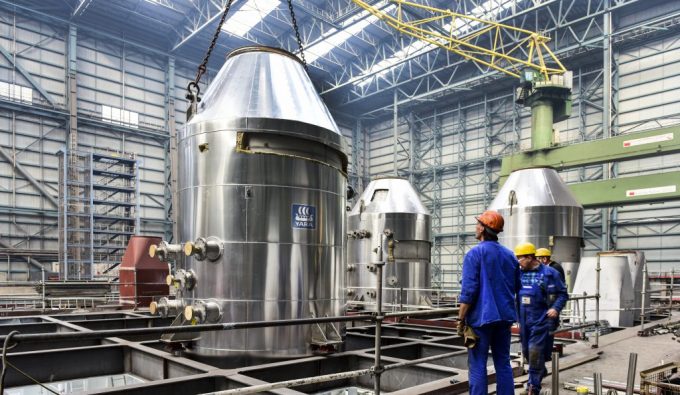
More carriers, even the doubters, are turning to scrubbers for IMO 2020
By Mike Wackett
29/05/2019
Around 16% of the ocean carrier global fleet – equating to 36% in terms of teu capacity – will be equipped with exhaust gas cleaning scrubber systems to comply with the IMO 2020 0.5% sulphur cap, according to Alphaliner.
Ships with approved scrubber systems installed will be allowed to continue to burn heavy fuel oil (HFO) after 1 January next year, but other vessels will need to bunker with low-sulphur fuel oil (LSFO), which is expected to carry a premium of around $200 per tonne.
And with ultra-large container vessels (ULCVs) consuming upwards of 100 tonnes a day at sea, the cost savings for a voyage with scrubber-fitted ship are likely to be substantial.
The consultant estimates that, according to a survey, more than 840 containerships are set to be equipped with scrubbers, for a total capacity of 8.09m teu, which includes 590 planned retrofits.
It said: “With the cost of scrubbers falling rapidly, to just $3-$5m a unit compared with $5-$8m a year ago, the scrubber option has become more attractive for owners.”
It noted that several carriers, including Maersk Line and Hapag-Lloyd, which had initially expressed doubts over the use of scrubbers, had “changed their minds”.
However, carriers that expressed scepticism or simply sat on the fence seem to have lost the cost-saving initiative to rivals that were in the scrubber camp from the moment the IMO approved the low-sulphur regulations in late 2016.
Famously, MSC’s chief executive called its strategy to install scrubbers on many of the ships in its fleet as a “no brainer”, whereas Maersk and Hapag-Lloyd’s executives argued that the use of exhaust gas cleaning systems was “not the long-term answer”.
Of the 12 top-ranked carriers, Alphaliner said, MSC had the “most extensive scrubber programme”, with more than 200 ships expected to have systems installed. Second is Taiwanese carrier Evergreen, with a retrofit and newbuild scrubber programme for around 140 vessels.
CMA CGM has “already committed” to 80 scrubber units, said the consultant, a number that is expected to climb to over 100 units by 2021.
Elsewhere, ambitious South Korean carrier HMM plans to have over half of its fleet of more than 50 ships equipped with scrubbers, and has made its strategy for IMO 2020 compliance a key part of its planned recovery from heavy loss-making.
Meanwhile, Maersk has said that it would install scrubbers on around 10% of its ships, and has allocated $263m for its owned fleet. It will supplement this with an unspecified number of chartered vessels fitted with scrubbers.
Hitherto, the Danish carrier and its competitors downplayed the impact of scrubber-fitted tonnage on the market in order not to muddy the waters over their aspirations for recovering the higher cost of LSFO via their proposed bunker surcharge.
Indeed, Maersk said on Friday, during its Q1 presentation, “most of the fleet will rely on compliant low=sulphur fuels when the new regulation steps into force”.
Nevertheless, with its 2M alliance partner MSC strongly ‘pro-scrubber’, and likely to deploy many of the ships with the onboard refining systems on its vessel-sharing network, Maersk could find it difficult to recover its LSFO costs from shippers.
Carriers will need to begin bunkering ships not fitted with scrubber systems with LSFO in the final quarter of the year, in order to be compliant with the new IMO regulations.

